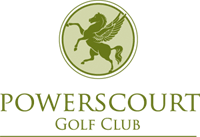Go Back to Your Basic Fundamentals
Let’s start with a definition:
Fundamental (adjective) – forming a necessary base or core; of central importance.
At its simplest the most basic of fundamental ideas in any golf swing is the set-up position, almost every movement pattern we make will stem from this beginning. Our grip, our alignment, our posture and stance will all govern the movements we need to make whether they are seen as desirable or detrimental compensated moves. And yet a lot of club golfers ignore the importance of this foundation when they want to improve things on the range giving way to the comfort of something that feels easier to do in the short term.
Of course like most issues in the swing the problems are not going to present themselves with a sudden change in feeling from one day to the next. For example body alignment can be checked using either another club or alignment sticks placed on the ground but when this shows up as been misaligned it becomes surprising to the golfer as it didn’t feel or look out of alignment when they addressed the ball. What’s more when the intended or adjusted alignment is then found it is likely that it will look and feel to golfer wrong or out of place until they have got used to it. In short basic fundamentals in set-up have long lasting advantages but may need short term work to alter them.
People’s definition of what set-up fundamentals are may very slightly but the big picture here is the recognition of the central importance they have on the swing.
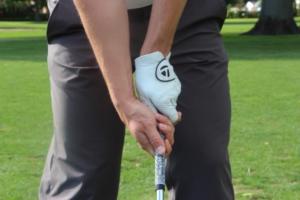
The Grip – one of the main functions outside of just holding onto the club is clubface orientation through the swing but especially at impact. The grip in this context is linked to how much (or little) the forearms rotate (pronation and supination) during the swing to get the desired position at impact. For example (the clubface is square or pointing at the target at address).
This image shows a grip where the hands are set in a position over to the right, clockwise (known as a strong grip). This determines that not a lot of arm rotation should be used in the downswing as this would bring the face of the club to a closed (pointing left) at impact. If the ball is going left you should check the grip as a basic fundamental.
For me, one of the other main functions a grip can have is how the top hand is placed in relation to the heel pad of the hand (hypothenar eminence).

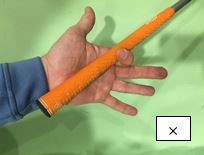
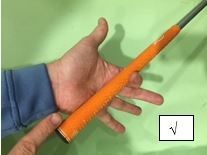
Placing the club under this heelpad lets us use leverage in the wrists better that can be turned into club speed. If the grip is placed like in the second image above it tends to lead to a stiffer action from the wrists, however this position could be used advantageously in putting.
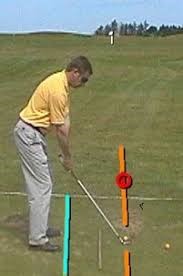
Alignment – the first consideration should be to where you are placing the clubface alignment in relation to the target line when in address position. As indicated above this should be done before taking the grip. The main focus in this context is the bodies alignment to the target line, that is the feet, hips and shoulder line. Once again I am not trying to use the words right and wrong but to get you to think of the knock on effect that body alignment has on the movement patterns in our swing.
My preference would be to see all these lines parallel to the target line for normal full swings. Body alignment function is likely to effect swing path and low arc point as well as more compensated issues from misalignment.
Posture – one of the main aims in our posture is to find a neutral spine position. Not having this neutral spine in a golf set up can limit the amount of rotation in your swing movements, disrupt sequencing through poor connection as well as the increase risk of injury. First you must find this neutral spine position in normal standing posture then to be able to retain this standing spine in our golf posture we need to hip hinge forward.
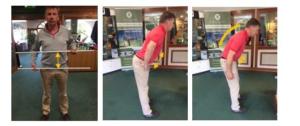
Perhaps a good way to feel this is – imagine parallel lines at your lower rib cage and your hip line. If you hip hinge the gap between these line should remain roughly the same however if you bend from your chest to waist area this gap will reduce. You may also notice that when posture is slumped or hunched over the shoulder blades become protracted loosing vital stability in the shoulder control. Once you have got into a good hip hinge posture then all we need to do is unlock the legs by flexing from your knees. One of the problem areas of posture is some people bend their legs too much at address (over active quads). With the correct amount of knee flexion you will activate your hamstrings and especially glute muscles, this will give you the best chance for power and stability.
You should never feel that going to basics is a step backwards – the best players in the world are constantly checking the basic fundamentals in their game. One of the greatest golfers, Jack Nicklaus made a special effort with his coach Jack Grout to spend time going over the core fundamentals to keep them in place even if he was playing well – a good lesson for us all.
